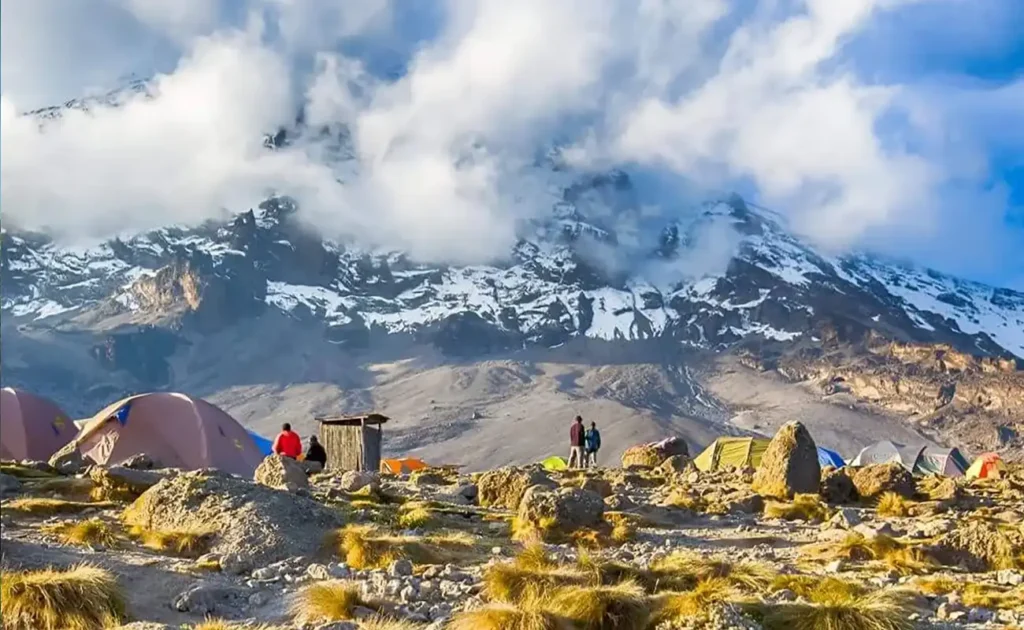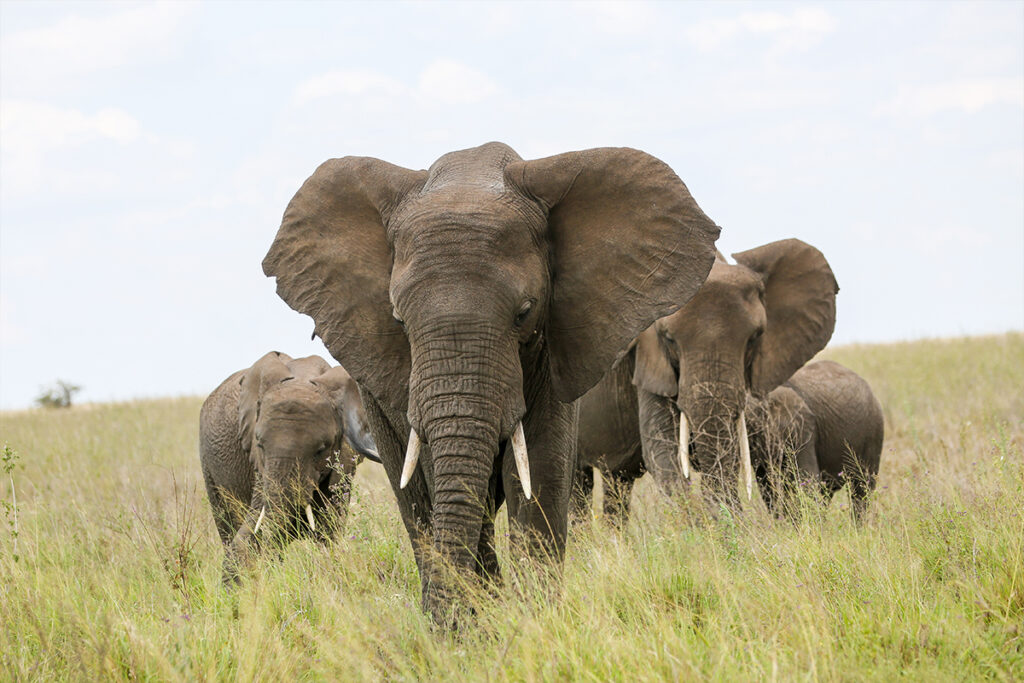In the heart of East Africa, Tanzania isn’t just a hub for the majestic wildlife of Serengeti, but also a linguistic treasure trove with over 120 distinct languages. While Swahili serves as the unifying national language, the country’s linguistic tapestry is enriched by diverse indigenous tongues. This linguistic diversity not only reflects Tanzania’s rich cultural heritage but also plays a crucial role in fostering communal identities.
Among these, languages such as Chaga, spoken by the Chaga people of Kilimanjaro, and Haya, prevalent in the Kagera Region, stand out for their historical significance. The Sukuma language, used by the Sukuma tribe, is another noted example, adding depth to Tanzania’s cultural mosaic. Recent statistics suggest that indigenous languages account for approximately 40% of Tanzania’s linguistic communication, hinting at the vibrant and culturally embedded nature of local dialects.

Exploring the Linguistic Diversity of Tanzania Beyond Swahili
Tanzania is not only known for Swahili but also boasts a rich linguistic tapestry of over 120 local languages. These languages are primarily spoken by various ethnic groups, with each group having its unique traditions and culture. Languages such as Sukuma, Chaga, and Nyamwezi are just a few examples of the diversity present. The Chaga language is spoken by the Chaga people who reside near the slopes of Mount Kilimanjaro. This rich linguistic diversity enhances Tanzania’s cultural richness.
The presence of so many languages in Tanzania highlights the country’s unique cultural identity. In many rural areas, indigenous languages remain crucial for daily communication. Local languages help maintain cultural practices and traditions, passed down through generations. They play a pivotal role in storytelling and preserving history. Even though Swahili and English dominate in official settings, these local languages thrive in communities.
Educators in Tanzania recognize the importance of this linguistic variety. Many schools in regions with significant indigenous language speakers offer lessons in local languages. This helps boost engagement and understanding among students. Moreover, studying in one’s mother tongue can lead to better education outcomes. It enhances learning and keeps students connected to their roots.
As globalization continues, Tanzania works to preserve these indigenous languages. Increasing awareness and cultural initiatives are being implemented to protect these valuable tongues. Radio programs and community events often feature local languages, promoting their use. The goal is to ensure that Tanzania’s rich linguistic diversity remains vibrant for future generations. This effort ties the past with the present, ensuring a dynamic future.
Key Indigenous Languages and Their Cultural Significance
Indigenous languages in Tanzania play a vital role in preserving the nation’s culture and identity. These languages capture the essence of traditions, beliefs, and heritage. The Sukuma language, for example, is not just a means of communication but also a gateway to understanding the Sukuma tribe’s unique practices. Storytelling in Sukuma passes down wisdom through generations. This keeps the community’s history alive and relevant.
Another significant language is the Chaga, spoken by those residing around Mount Kilimanjaro. It holds a key to ancient traditions and rituals unique to the Chaga people. Cultural festivals and local ceremonies often feature songs and dances performed in Chaga. This showcases the vivid tapestry of their cultural expressions. Through language, such traditions can thrive and be celebrated.
The Nyamwezi language also adds to the cultural mosaic of Tanzania. Embedded in the Tabora Region, it remains a medium for folk tales and songs that teach values and history. Festivals and gatherings rely on this language to unite people, allowing them to share experiences and strengthen bonds. Speaking Nyamwezi is thus a form of cultural expression and pride.
These indigenous languages offer more than just communication; they link the past with the present. While Swahili and English are widespread, local languages maintain their influence. Efforts to document and promote these languages help keep them alive. This appreciation ensures cultural continuity and lets people remain connected to their roots. Through these efforts, the rich cultural heritage of Tanzania continues to flourish.
Regional Languages and Their Impact on Local Communication
Regional languages in Tanzania influence local interaction and assist in maintaining identity. They are especially vital in rural communities where Swahili and English might not be as dominant. For instance, the Haya language is indispensable in the Kagera region near Lake Victoria. It maintains the culture and promotes effective communication within the community. It’s important for daily activities and social events.
These regional languages also play a role in education and governance. In regions where these languages are spoken, they are incorporated into local schools. This bilingual approach helps students learn and understand better. Local government meetings are sometimes held in regional languages too. This ensures everyone can participate and understand the issues at hand.
Furthermore, regional languages foster community bonds. When people communicate in their native language, there is a deeper sense of unity and belonging. Shared language strengthens relationships and builds trust among community members. It also supports cooperation in community activities. This is vital for collaboration and progress.
Efforts to preserve these regional languages are ongoing. Community projects and linguistic studies aim to document and promote their use. Radio broadcasts and educational programs in regional languages help keep them alive. These initiatives not only preserve the languages but also enrich Tanzania’s heritage. As a result, the linguistic landscape remains as diverse as ever.
The Role of Foreign Languages in Tanzanian Society
Foreign languages have a significant presence in Tanzanian society, especially in education and business. English holds a crucial role as it is often used in schools and universities for instruction. This opens doors for students to access global information and ideas. It also helps them participate in international conversations. Mastering English can lead to better job opportunities and economic growth for individuals.
Chinese has become increasingly popular due to Tanzania’s growing economic ties with China. Learning Chinese offers students and professionals unique opportunities in sectors like trade and tourism. Many schools and universities now offer Chinese language courses. This helps Tanzanians connect better with Chinese-speaking communities and businesses. Collaboration becomes smoother when language barriers are reduced.
Arabic is also important for religious and cultural reasons. Tanzania has historical ties to the Arab world, and Arabic is used in religious practices, particularly in Islam. It enhances the cultural and spiritual life of many Tanzanians, especially in regions like Zanzibar. Lessons in Arabic provide deeper insights into religious texts and practices. This strengthens religious bonds and understanding.
French is another foreign language that is gradually gaining ground in Tanzania. This is primarily due to the country’s proximity to several French-speaking nations in Africa. French language skills can facilitate cross-border trade and relationships. It increases Tanzania’s integration with neighboring Francophone countries. Learning French prepares Tanzanians for expanded participation in regional associations.
These foreign languages enrich Tanzania’s diverse linguistic landscape. They also provide valuable tools for global interaction and understanding. Learning foreign languages opens up new possibilities for Tanzanians. It helps in building connections and accessing different cultures and markets. In today’s globalized world, the importance of speaking foreign languages cannot be overstated.
Key Takeaways
- Indigenous languages preserve Tanzania’s diverse cultural heritage and traditions.
- Regional languages enhance local communication and community bonding.
- Foreign languages like English and Chinese open up global opportunities.
- Arabic plays a significant role in religious practices in Tanzania.
- French fosters better relations with neighboring Francophone countries.
Conclusion
Tanzania’s linguistic diversity is a reflection of its rich cultural heritage. From indigenous languages that bind communities to foreign languages that open up global avenues, each tongue plays a vital role. Emphasizing and preserving this diversity ensures the continuity of cultural practices and communal bonds.
The interplay of local and global languages in Tanzania showcases the nation’s dynamic identity. Whether for education, business, or cultural reasons, these languages enrich Tanzanian society. As Tanzania navigates its future, its commitment to linguistic diversity remains a cornerstone of its vibrant cultural landscape.



